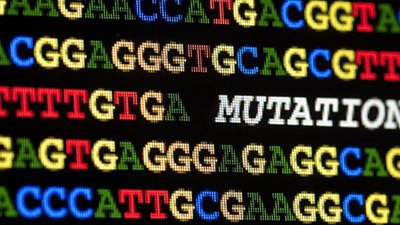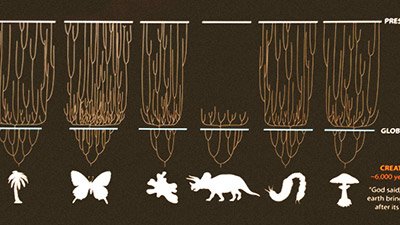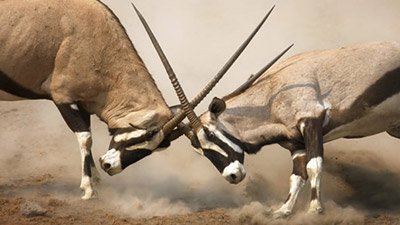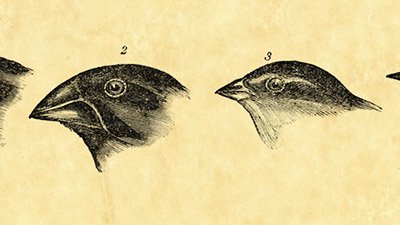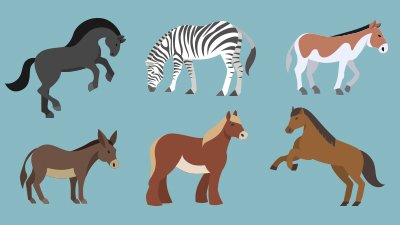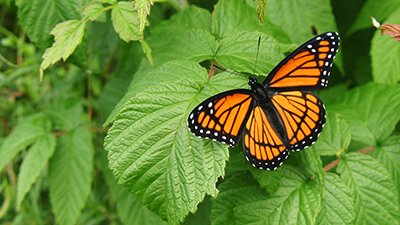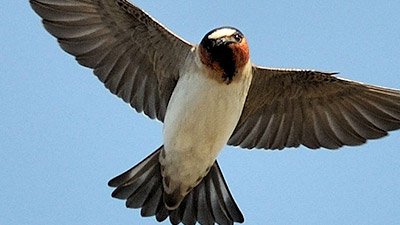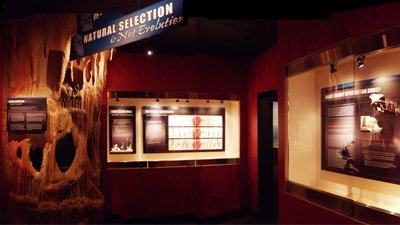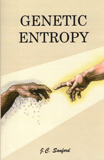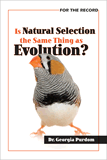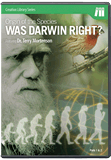Natural Selection
Natural Selection Is Not Evolution!
The supposed vehicles of evolution are mutations, natural selection, and other mechanisms that—when combined with that pixie dust of time—allegedly led to the development of all life forms present today. However, natural selection merely redistributes or reduces preexisting genetic information, and mutations often corrupt the information.
Natural Selection and Creationists
The creationist view of natural selection is supported biblically and scientifically. Natural selection is a God-ordained process that allows organisms to survive. It is an observable reality that occurs in the present and takes advantage of the variations within the kinds and works to preserve the genetic viability of the kinds.
Natural Selection and New Information
Natural selection cannot generate brand new genetic information. It simply doesn’t work that way. Instead, it filters information that already exists. The general theory of evolution is the idea that single-celled organisms gained new genetic information over millions and billions of years, and eventually arrived at “higher life-forms” such as man.
Adaptation in Plants
If living things such as plants have been observed to adapt to their environment—isn’t that evolution? Adaptation of plants does not prove evolution.
Does Natural Selection Prove Evolution?
Distinguishing natural selection from Darwinian evolution (the latter combines natural selection with the idea that all life has an ancestor in common) is one of the primary challenges modern creationists face in the origins debate. Experimental confirmation of natural selection is interpreted as proof of Darwin’s theory.
Natural Selection Topics
-
Adaptation
Living things, like plants, finches and lizards, have been observed to adapt to their environment—isn’t that evolution?
-
Antibiotic Resistance
Antibiotic resistance in bacteria is often touted as proof of evolution, but is it really? After all, the bacterium remains a bacterium!
-
Mutations
Are mutations—copying errors in DNA—the driving force for biological evolution? Or do they represent the sad reality of a sin-cursed world?
-
Speciation
Speciation, the formation of new species, is not evolution in action. Rather, it demonstrates the incredible variety God put within each created kind.
-
Survival of the Fittest
Survival of the fittest is not evolution. It is a fact of life in a world that has been tainted with death and bloodshed since Adam rebelled against his Maker.
Articles About Natural Selection
-
Natural Selection Is Not Evolution!
Evolutionists often refer to natural selection as equivalent to biological evolution. Is this claim warranted by the observation evidence?
-
Suicide and Evolution
“Maybe it is survival of the fittest, maybe some of us are meant to just give up, and maybe that would help the species.”
-
Jan. 15, 2024 from Ken Ham Blog
What do we make of a headline that proclaims, “Natural Selection Can Actually Slow Evolution, Scientists Say”?
-
March 5, 2023 from Answers Magazine
The young-earth creationist view has been so maligned in popular culture that many people think creationists deny basic facts of life.
-
Oct. 1, 2022 from Answers Magazine
Take a look at these reasons why natural selection isn't the same as evolution, and how—unlike evolution—natural selection agrees with God's Word.
-
May 23, 2022 from Answers in Depth
How biblical kinds differ from modern species, a history of speciation models, and why the biblical model better explains the natural world
-
May 16, 2020 from Answers in Depth
Are intelligently designed experiments using already present features in already-existing bacteria and viruses really examples of molecules-to-man evolution?
-
May 4, 2019 from Answers in Depth
The viceroy is a colorful butterfly that is known to mimic other species. But it is not just a tasty option that looks like the unpalatable models it mimics.
-
May 3, 2019 from Answers in Depth
A study looked at the colors of lice on the feathers of numerous varieties of pigeons. According to the authors, the research was proof of evolution. Is it so?
-
Aug. 5, 2017 from Essays on Origins: Creation vs. Evolution
Darwin reasoned that if animals can be selectively bred by man to produce certain traits, then nature can select for limitless traits by natural selection.
-
Dec. 22, 2016 from Answers in Depth
Scientists from Northwestern University have developed a mathematical model that may help explain animal ornamental mysteries.
-
Book Chapter2.4 Natural Selection, Yes; Evolution, NoMarch 28, 2016 from Creation: Facts of Life
Natural selection does not lead to continual improvement (evolution); it only helps to maintain features that organisms already have (creation).
-
Book Chapter2.3 Change, Yes; Evolution, NoMarch 26, 2016 from Creation: Facts of Life
There are obviously all kinds of “change through time” that are not evolution, so evolution must be only a particular kind of change through time.
-
Book Chapter2.2 Natural SelectionMarch 19, 2016 from Creation: Facts of Life
There is considerable evidence that Darwin was indeed correct about natural selection and the “war of nature.”
-
Jan. 1, 2016 from Answers Magazine
When Charles Darwin studied finches from the Galápagos Islands, he attributed their variations to natural selection. Is there any truth to his claims?
-
In-Depth ArticleIs Rapid Lizard Adaptation a Template for Deep-Time Evolution?Nov. 15, 2014 from Answers in Depth
Evolutionists declare stickier toes reveal the path up the evolutionary tree.
-
Magazine Department ArticleBig Bang and Evolution Still a Big Question . . .July 1, 2014 from Answers Magazine
Statistics from an AP poll conducted in March 2014
-
June 7, 2014 from Answers in Depth
Hawaiian cricket “evolution” into stealth mode saves them from extinction.
-
In-Depth ArticleReverse Evolution Causes Darwin’s Finches to Go Missing?March 20, 2014 from Answers in Depth
Evolutionary experts assert finches should be “protected” from surviving through hybridization if it leads to un-speciation.
-
In-Depth ArticleHow Cavefish Went Blind, and Why It MattersFeb. 17, 2014 from Answers in Depth
What makes cavefish go blind? Now we know (or at least we have evidence for a strong possibility). But it isn’t evolution!
-
July 1, 2013 from Answers Magazine
Natural selection does not produce new genetic information that leads to different types of birds.
-
-
-
Peppered Moth AgainFeb. 18, 2012 from News to Know
Peppered moth: “the poster child of Darwinian evolution”
-
Jan. 22, 2012 from Answers Magazine
Creationists believe in natural selection.
-
Yeast Begat YeastJan. 21, 2012 from News to Know
“Evolution in progress” said to show how easily multicellularity evolved
-
Warp Factor Evolution, LieutenantJan. 7, 2012 from News to Know
Bulletin: salmon evolve at warp speed . . . into salmon!
-
-
The Eyes Have ItApril 30, 2011 from News to Know
So with peacocks—the classic Darwinian example of sexual selection—do the eyes have it or not?
-
Skin Color and Natural SelectionFeb. 26, 2011 from News to Know
Another prominently reported example of “evolution” illustrates just the opposite—and supports the creationist critique of Darwinian evolution
-
Evolutionary CuckoosJan. 15, 2011 from News to Know
Have Australian birds “taken a new evolutionary step”? Or is this another cuckoo example of “evolution” in action?
-
Cane Toad: “Evolution” in Action?Oct. 23, 2010 from News to Know
Is the cane toad invading Australia the latest example of “evolution” in action?
-
Natural Selection Not at WorkJuly 17, 2010 from News to Know
Natural selection, the force driving so-called “survival of the fittest,” is at the heart of both evolutionist and creationist explanations for life’s diversity. But in one strange case, natural selection is not at work on an animal.
-
Large-Scale Natural Selection TestMay 15, 2010
Scientists have run one of the largest-scale tests of natural selection ever. Does the result do anything to convince us of Darwin’s theory?
-
Caterpillar Communication from Ambulation?April 17, 2010
Could caterpillar communication have come from ambulation?
-
Evolution at a Snail's PaceMay 16, 2009 from News to Know
It’s supposedly evolution in action but the evolution is proceeding like a snail creeping downhill.
-
Molucules Don't Make the ManMay 2, 2009 from News to Know
Scientists have built a molecular system that “evolves” in the lab. But like other such systems that have gone before it, this doesn’t prove Darwin.
-
Cod Evolution No-GoFeb. 28, 2009 from News to Know
Another example of “evolution in action”—need we even bother examining the reality to confirm this isn’t what Darwin predicted?
-
Book ChapterIs Natural Selection the Same Thing as Evolution?Feb. 9, 2009 from The New Answers Book 1
Natural selection is an observable process that is often purported to be the underlying mechanism of unobservable molecules-to-man evolution.
-
Twitchy LizardsJan. 24, 2009 from News to Know
Lizards are busy “evolving” again—is it more proof for Darwinism?
-
The “Eyes” Have ItJan. 13, 2009
Darwin suggested that if a graded series of organisms, each with some sort of eye, can be found then this would mean that the eyes could have been produced by natural selection.
-
When Hunters Fuel 'Evolution'Jan. 10, 2009 from News to Know
Losing or gaining anatomical features, changing colors, growing bigger or smaller—it doesn’t matter how a biological population is changing, it’s evolution!
-
Debating the Origin of SexDec. 6, 2008
At the beginning He made them male and female—emphasis on the “and”?
Recommended Resources

Answers in Genesis is an apologetics ministry, dedicated to helping Christians defend their faith and proclaim the good news of Jesus Christ.
- Customer Service 800.778.3390
- © 2024 Answers in Genesis




